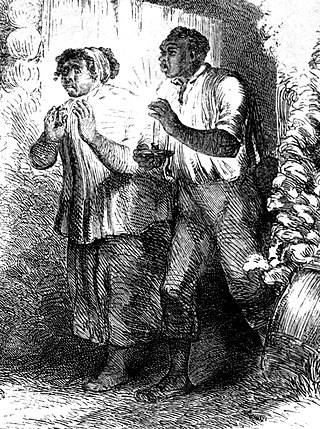
Uncle Tom is the title character of Harriet Beecher Stowe's 1852 novel Uncle Tom's Cabin. The character was seen by many readers as a ground-breaking humanistic portrayal of a slave, one who uses nonresistance and gives his life to protect others who have escaped from slavery. However, the character also came to be seen as inexplicably kind to white slaveholders, especially based on his portrayal in pro-compassion dramatizations. This led to the use of Uncle Tom – sometimes shortened to just a Tom – as a derogatory epithet for an exceedingly subservient person or house negro, particularly one aware of their own lower-class racial status.

Blackface is a form of theatrical makeup used predominantly by non-black people to portray a caricature of a black person.
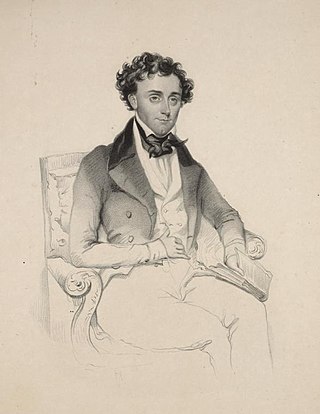
Thomas Dartmouth Rice was an American performer and playwright who performed in blackface and used African American vernacular speech, song and dance to become one of the most popular minstrel show entertainers of his time. He is considered the "father of American minstrelsy". His act drew on aspects of African American culture and popularized them with a national, and later international, audience.
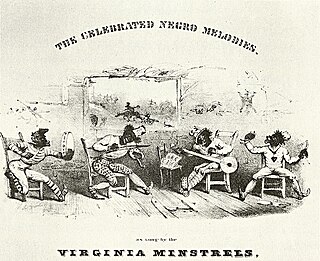
The minstrel show, also called minstrelsy, was an American form of racist theatrical entertainment developed in the early 19th century. Each show consisted of comic skits, variety acts, dancing, and music performances that depicted people specifically of African descent. The shows were performed by mostly white people wearing blackface make-up for the purpose of playing the role of black people. There were also some African-American performers and black-only minstrel groups that formed and toured. Minstrel shows caricatured black people as dim-witted, lazy, buffoonish, cowardly, superstitious, and happy-go-lucky.
Aunt Jemima was an American breakfast brand for pancake mix, syrup, and other breakfast food products. The original version of the pancake mix was developed in 1888–1889 by the Pearl Milling Company and was advertised as the first "ready-mix" cooking product.

The Story of Little Black Sambo is a children's book written and illustrated by Scottish author Helen Bannerman and published by Grant Richards in October 1899. As one in a series of small-format books called The Dumpy Books for Children, the story was popular for more than half a century.
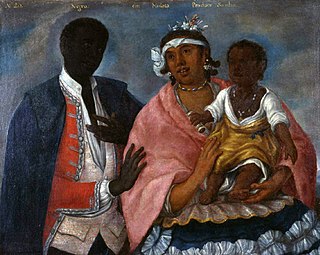
Sambo is a derogatory label for a person of African descent in the English language. Historically, it is a name in American English derived from a Spanish term for a person of African and Native American ancestry. After the Civil War, during the Jim Crow era and beyond, the term was used in conversation, print advertising and household items as a pejorative descriptor for Black people. The term is now considered offensive in American and British English.

Marlon Troy Riggs was a black gay filmmaker, educator, poet, and activist. He produced, wrote, and directed several documentary films, including Ethnic Notions, Tongues Untied, Color Adjustment, and Black Is...Black Ain't. His films examine past and present representations of race and sexuality in the United States. The Marlon Riggs Collection is housed at Stanford University Libraries.

Tongues Untied is a 1989 American experimental documentary film directed by Marlon T. Riggs, and featuring Riggs, Essex Hemphill and Brian Freeman. The film seeks, in its author's words to, "...shatter the nation's brutalizing silence on matters of sexual and racial difference."

Rastus is a pejorative term traditionally associated with African Americans in the United States. It is considered offensive.

Stereotypes of African Americans are misleading beliefs about the culture of people of African descent who reside in the United States, largely connected to the racism and discrimination which African Americans are subjected to. These beliefs date back to the slavery of black people during the colonial era and they have evolved within American society.
Color Adjustment is a 1992 documentary film that traces 40 years of race relations and the representation of African Americans through the lens of prime-time television entertainment, scrutinizing television's racial myths. Narrated by Ruby Dee, it is a sequel to Riggs’s Ethnic Notions, this time examining racial stereotypes in the broadcast age.
Black is... Black Ain't is a 1995 award-winning feature-length documentary by Marlon Riggs. It explores the multiplicity of expressions of African American identity.
There are stereotypes of various groups of people which live within the United States and contribute to its culture. Worldwide, a disproportionately high number of people know about these stereotypes, due to the transmission of American culture and values via the exportation of American-made films and television shows.
The representation of African Americans in media – speech, writing, still or moving pictures – has been a major concern in mainstream American culture and a component of media bias in the United States.

The watermelon stereotype is an anti-black racist trope originating in the Southern United States. It first arose as a backlash against African-American emancipation and economic sufficiency in the late 1860s.
Patricia A. Turner, Ph.D, is a folklorist who documents and analyzes the stories that define the African American experience. A professor in World Arts and Cultures/Dance and African American Studies at UCLA, Turner is the author of five books on topics including rumors, legends, and conspiracy theories; to African American quilters; and images of African Americans in popular culture. She is a 2021 recipient of the Linda Dégh Lifetime Achievement Award for legend scholarship.

The Jolly Darkie Target Game was a game developed and manufactured by the McLoughlin Brothers which was released in 1890. It was produced until at least 1915. Other companies produced similar games, such as Alabama Coon by J. W. Spear & Sons.

The Jim Crow persona is a theater character — developed and popularized by Thomas D. Rice (1808–1860) — and a racist depiction of African-Americans and of their culture. Rice based the character on a folk trickster named Jim Crow that had long been popular among black slaves. Rice also adapted and popularized a traditional slave song called "Jump Jim Crow" (1828).
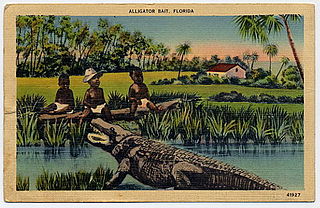
Depicting African-American children as alligator bait was a common trope in American popular culture in the 19th and 20th centuries. The motif was present in a wide array of media, including newspaper reports, songs, sheet music, and visual art. There is an urban legend claiming that black children or infants were in fact used as bait to lure alligators, although there is no meaningful evidence that children of any race were ever used for this purpose. In American slang, alligator bait is a racial slur for African-Americans.













